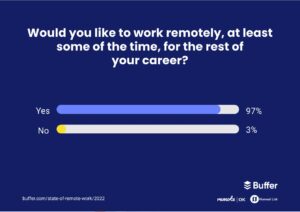
The concept of flexible working began in the 1970s, not surprisingly coinciding with women’s participation in the workforce growing to over 50% (source: UK Government. Most flexible working arrangements are intended to make the working day more family-friendly, and this is unsurprising given the incompatibility of school hours with standard office hours.
Many don’t realise that the standard 9-5 working week was introduced by the unusually progressive Henry Ford in 1926, and was itself a reduction from much longer factory hours that had dominated since the industrial revolution. These hours were reasonable when one partner (overwhelmingly the female) stayed at home to look after the home and any children, but with the increasing desire and financial need for both adult partners to work, and recognition the positive impacts of fathers being involved in children’s upbringing, the business world has adapted to the availability of the necessary human resources to operate.
There are many different types of flexibility that fit within the wider term. One popular example is “flexitime” often seen in public sector jobs – where a core set of hours such as 11-3 are mandatory, but staff can request to start and finish earlier or later to make up their required weekly, monthly or annual hours according to an agreed alternative schedule that fits around their childcare or other needs. This may differ based on term-time, involve compressing hours such as 5 x 7-hour days into 4 longer working days – usually in an agreed timetable to ensure that the organisation can still run effectively.
Other growing examples include job sharing, which tends to be more popular for senior roles (source) and even the much derided “zero hours contract”, which, if used to provide worker schedule flexibility can be a great tool despite its reputation as simply a cost-saving measure.
With part-time workers making up 25% of the market, plus the combined impact of other methods of flexible working times, almost 45% of all workers can now be said to be flexing their work around their domestic and personal needs.
This flexibility with time has been gradually growing, but the big story of the last two years has been the growth of homeworking necessitated by the COVIC pandemic. With all businesses deemed “non-essential” effectively closed for several months during 2020 and 2021, businesses had to adapt quickly to continue to operations with workers in remote locations, and this has proven to be a seismic change in most developed nations across the globe. 2022 sees the UK market settling at around 20% of workers permanently based at home (compared to 5% before the pandemic), and in the US up to 62% of workers are based at home at least occasionally.
For many office-based roles, the post-pandemic norm appears to have settled into a hybrid model, with part of the week being at home, and part office-based. This creates benefits for both employers and employees, as with any large change, the impact has not been 100% positive.
 On the positive side companies report increased staff retention and profits, including in the law sector and some have been able to reduce expensive office space as a result of remote working practices. Employees report improvements in work/life balance, in productivity and some cohorts, such as Millennials, report that they would sacrifice salary or other benefits to maintain the flexibility to work from home.
On the positive side companies report increased staff retention and profits, including in the law sector and some have been able to reduce expensive office space as a result of remote working practices. Employees report improvements in work/life balance, in productivity and some cohorts, such as Millennials, report that they would sacrifice salary or other benefits to maintain the flexibility to work from home.
On the flipside, remote working can be difficult for companies navigating cyber security, confidentiality and unstable internet access, an increase in virtual meetings to make up for easier in-person communications. Working at home can be isolating especially for those who live alone, and employees report missing the unplanned “water cooler” chats that can help with work challenges, the office social life, distractions from children and domestic concerns and indeed the work/life balance can suffer when the end of the working day is blurred as they can in theory be online 24 hours a day for work related tasks.
One real issue for both companies and employees is the increased difficulty of on boarding and new or trainee staff. While online guides and advice abound, many staff relish the experience of personal interaction and mentorship, which can be hard to replicate in an online-only world. Rich networking experiences can be one of the most rewarding ways to learn at work, and however much the working word changes, our peer group remains one of the most valuable and appreciated influences on our professional and personal lives.
